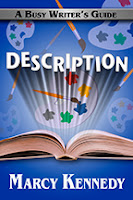Part of the Indie Author Series
In two of my earlier posts for the Indie Author Series, I covered Understanding Your Ebook Formatting Options and Three Quick Tips to Help Your Print Books Look Professional.
Today I want to return to the topic of formatting—specifically formatting our print books. As the marketplace grows more and more crowded, we need every advantage to stand out and to make our books an enjoyable reading experience. That means we need professional-looking, easy-to-read formatting for all versions of our books.
Print book formatting—in my opinion—is actually trickier than ebook formatting, but that doesn’t mean we need to let it intimidate us. We have a lot of options to help us with the process.
Hire a Professional
I mentioned this one first when I talked about ebook formatting options as well. Hiring a professional will always be the easiest path. It doesn’t involve a learning curve, and it has the smallest time investment. (We invest the time to find a professional but not to do the actual work.)
The drawbacks are we’ll need to pay someone to format each book (which can add up), we’ll often need to pay that person again if we want to make updates to the content, and we’ll have to find a reliable formatter in the first place. This means we’ll also be dependent on their ability to fit us into their schedule, and we might have to delay the release of our paperback to accommodate them.
The benefit (apart from the savings in time) is a good formatter will make our book look as good as any book produced by a traditional publisher.
Vellum
Vellum is the option I presently use to format both my print books and ebooks for my pen name.
I’ll tell you the drawback right away—it’s only available for Mac computers. If you’re a PC user, this option isn’t currently available.
If you have a Mac, though, Vellum has a multitude of benefits:
- A one-time fee that allows unlimited uses
- Easy to learn and use with helpful customer service if you can’t find the answer you need in their online tutorials
- Beautiful, professional-looking books
- The ability to produce both your ebook and print book from a single file
Vellum has saved me so much time since I started using it, while still giving me more control over the production of my books than I could get if I hired a formatter.
Book Design Templates
Book Design Templates is a website that provides templates compatible with Microsoft Word, Apple Pages, or Adobe InDesign. In other words, we can use them whether we’re running a Mac or a PC computer.
The templates allow us to create ebook and print book files at the same time, and they come complete with the fonts we’ll need. They’re easy to use, and also come with detailed instructions and support.
I used two different templates from Book Design Templates prior to switching to Vellum, and they’re a fantastic option too, though they take longer to create your files than creating books with Vellum.
(There’s also a glitch where if you’re trying to create a print-ready PDF from the Mac version of Microsoft Word, it won’t hold your margins.)
Other Automated Services
Draft2Digital, Kindle Direct Publishing, and other sites now offer an automated conversion from either your ebook file or a Microsoft Word document into a print-ready PDF.
These services are usually free, which is a major benefit if funds are tight. Some of them will create your print book directly from your ebook file, while others require a specially formatted Microsoft Word file. This means that some offer the benefit of ease, and others can be more difficult to deal with than learning a program like Vellum or the Book Design Templates.
Unfortunately, the old saying “you get what you pay for” can sometimes be true as well. While these services are improving, many of them still produce clumsy looking print books that lack the features that make a print book look professional. Because these services are free, though, we can try them without risk. If we’re not happy with the result, we can move on to something else.
What methods have you used to format your print book? What did you like/dislike about them? Would you try something different next time?
 Marcy Kennedy is a mystery and speculative fiction writer who believes fantasy is more real than you think. Alongside her own writing, Marcy works as a freelance fiction editor and teaches classes on craft and social media. She’s also the author of the Busy Writer’s Guides series of books. You can find her blogging about writing and about the place where real life meets science fiction, fantasy, and myth at marcykennedy.com.
Marcy Kennedy is a mystery and speculative fiction writer who believes fantasy is more real than you think. Alongside her own writing, Marcy works as a freelance fiction editor and teaches classes on craft and social media. She’s also the author of the Busy Writer’s Guides series of books. You can find her blogging about writing and about the place where real life meets science fiction, fantasy, and myth at marcykennedy.com. Blog | Facebook | Twitter | Amazon | Apple iBooks | Barnes & Noble
About Description
 Description in fiction shouldn’t be boring for the reader or for the writer.
Description in fiction shouldn’t be boring for the reader or for the writer. Description: A Busy Writer’s Guide will help you take your writing to the next level by exchanging ho-hum description for description that’s compelling and will bring your story to life, regardless of the genre you write.
In Description: A Busy Writer’s Guide, you will
- find the answer to the age-old question of how much description is too much;
- learn how to use point of view to keep description fresh;
- recognize the red flags for boring description in fiction;
- explore how to use all five senses to bring your descriptions to life for the reader;
- discover the ways metaphors and similes can add power to your descriptive writing;
- gain the tools needed to describe setting, characters, and action in engaging ways;
- learn how descriptions can add conflict, enhance the theme, and amp up emotion; and
- much more.


Great article! This is information that is sometimes difficult to find- it's the 'nitty gritty' details that really make a difference. Could you give us some examples of what makes a book look less professional? What problems have you encountered that services like Vellum or hiring a professional can avoid?
ReplyDeleteThanks for a great overview of our options. As a poor PC guy, I'm stuck with Word. I have a standard layout format, aka Word template, with fonts, first/remainder paragraph indents, left/right margins, left/right headers, etc. After I cut and paste my text (from a Scrivener export) into this, I fix widows and orphans (with soft RETURNs and character spacing adjustments), then finish off by aligning my RH/LH pages. Not very automatic but I'm pretty happy so far.
ReplyDelete